


 |
 |
 |
The egg has been used for decorative means for hundreds of year and also given as gifts.
In many different variations the egg one way or another have been decorated.
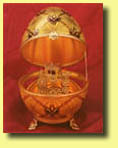 |
eggs , symbols of creation and new life have been exchanged for hundreds of years. Faberge' Imperial eggs were commissioned annually for the Russian Czars Alexander III and Nicohlas II. Peter Carl Faberge' is deservedly the most famous creator of the stunning gold, silver and jewel-studded treasures of Imperial Russia. The first Faberge' egg was presented in 1886 as an Easter gift from Czar Alexander III to his wife Czarina Maria Feodorovna and was proclaimed the most beautiful gift ever given. | 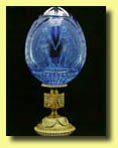 |
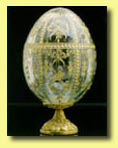 |
The advent of the first gift of a Faberge' Egg sparked a tradition among Russian Czars for the next three decades, until the demise of the Imperial Court. On Easter Sunday, the reigning Czar would present an Imperial Egg to his wife or mother. Faberge's Imperial Egg designs became the object of great anticipation by the Imperial Court, whom Faberge' delighted in surprising with Imperial Eggs , each more magnificent than the last. | 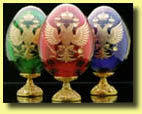 |
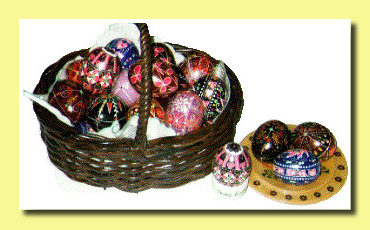
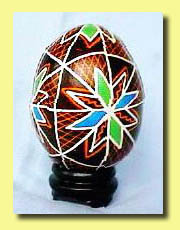 |
Pysanky are not made to be eaten. They are given as gifts, exchanged with friends and used as decorations all year round. As you exchange the pysanka with one another as a token of love and friendship, the significance becomes greater when you can beam with pride and say "I made them," for the egg carries considerable proof of the effort extended upon it, and therefore makes a cherished gift. Sometime, hold a pysanka up to the light, and look inside through one of the tiny holes. You will have to hold the egg very close to your eye to see it well. The inside is sometimes even more beautiful than the outside! (Suggestion by BY-san) |
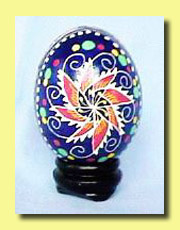 |
 |
 |
 |